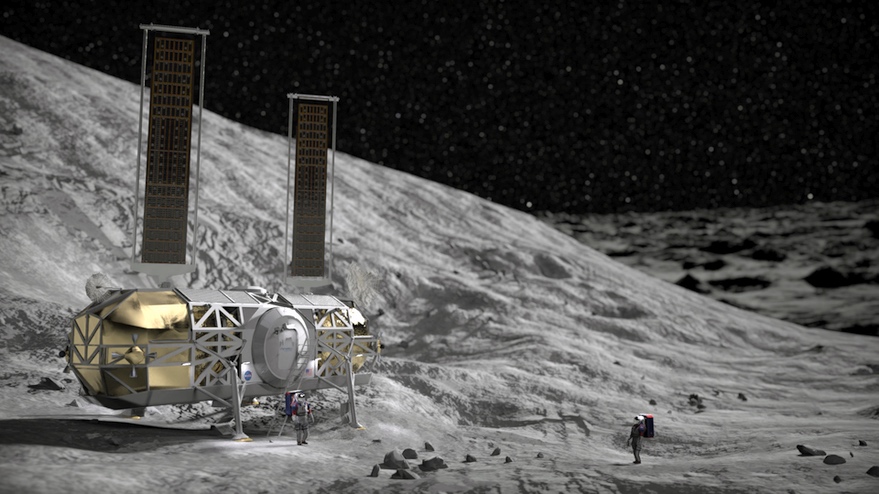WASHINGTON — Teams led by Blue Origin and Dynetics, runners-up in NASA’s first competition to develop a lander to transport astronauts to the lunar surface, have submitted proposals for a NASA competition to select a second lander.
Blue Origin announced Dec. 6 that it submitted a proposal for NASA’s Sustaining Lunar Development (SLD) competition to fund development of a lander capable of transporting astronauts to and from the lunar surface. The announcement coincided with NASA’s deadline for SLD proposals.
As with its original Human Landing System (HLS) proposal, Blue Origin called the companies it partnered with on the SLD proposal the “National Team.” Draper and Lockheed Martin, who were part of that original proposal, rejoined the new team. Blue Origin also added Astrobotic, a company developing robotic lunar landers, and Honeybee Robotics, a space technology company acquired by Blue Origin in January.
Notably absent from the team is Northrop Grumman, which was part of Blue Origin’s original proposal, contributing a module that would transport the lander from the lunar Gateway to a low lunar orbit. In its place is Boeing, a company that submitted its own HLS proposal but was not selected for an initial “base period” award in 2020.
Blue Origin did not disclose details about its proposed lander or the roles its partners would play. The company instead emphasized the national aspect of its team, with suppliers in 48 of 50 states, excluding only Nebraska and North Dakota.
Northrop Grumman is instead joining a team led by Dynetics that submitted its own SLD proposal, the companies announced Dec. 7. The companies also did not disclose details about their concept but did release an illustration, showing a design similar to what Dynetics proposed in the original HLS competition.
“As the only company to successfully build a crewed lunar lander, Northrop Grumman will be an excellent partner as we support NASA’s inspiring efforts to return humans to the lunar surface,” said Steve Cook, president of Dynetics, in a statement, referring to the development of the Apollo-era Lunar Module by Grumman Aerospace. “We believe our partnership with Northrop Grumman makes us more than ready for the challenge.”
No other companies have yet announced submitting SLD bids. Blue Origin and Dynetics will be front-runners even if there are other proposals given their experience in the earlier HLS competition as well as receiving awards in September 2021 from NASA’s Next Space Technologies for Exploration Partnerships (NextSTEP) Appendix N effort to support work on future lunar landers. Lockheed and Northrop also received Appendix N awards.
In a panel during the American Astronautical Society’s Wernher von Braun Memorial Symposium in October, Andy Crocker, HLS program manager at Dynetics, said his company had used the Appendix N award to mature key technologies for its lander, including its engine. In the same panel, Ben Cichy, senior director of lunar program engineering at Blue Origin, said his company has also used Appendix N to advance key technologies in several areas, such as cryogenic fluid management for the hydrogen fuel used on its BE-7 engine.
NASA announced the SLD effort in March to select a second provider of lunar landing services for Artemis missions, with enhanced capabilities to support the later “sustainable” phase of lunar exploration, such as larger crews and longer stays. The company NASA selects for SLD will fly one demonstration mission, likely no earlier than Artemis 5 in the late 2020s, and be eligible to compete for future missions.
NASA prohibited SpaceX from competing for SLD as that company had won a $2.9 billion HLS contract in April 2021 to develop a lander based on the company’s Starship vehicle. Both Blue Origin and Dynetics protested that award to the Government Accountability Office, which rejected their protests. Blue Origin later filed suit, and lost, in the Court of Federal Claims.
Instead, NASA exercised what it calls “Option B” in that award for SpaceX to modify that design for later sustainable missions and conduct a second demonstration mission. NASA finalized that Option B award Nov. 15, valued at $1.15 billion.
NASA expects to select the winner of the SLD competition in June 2023.
